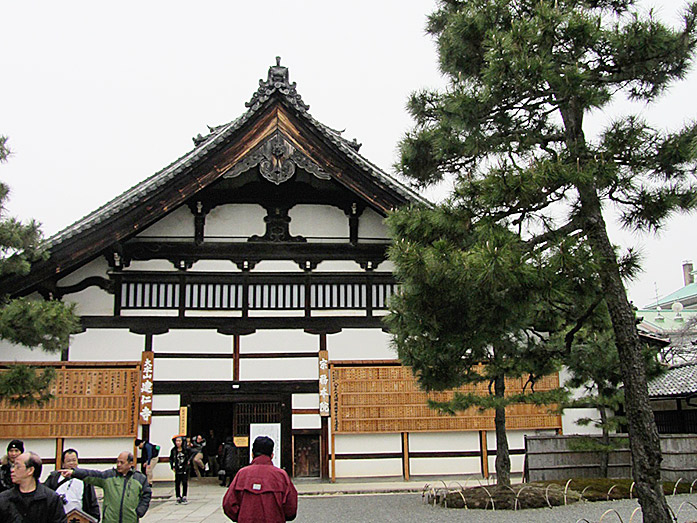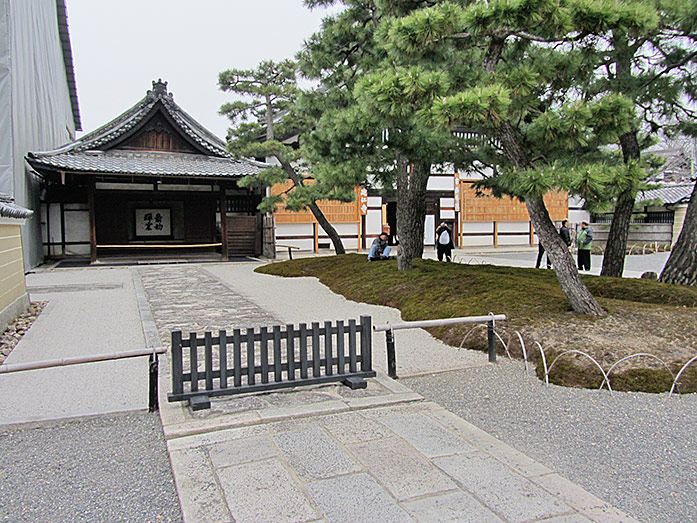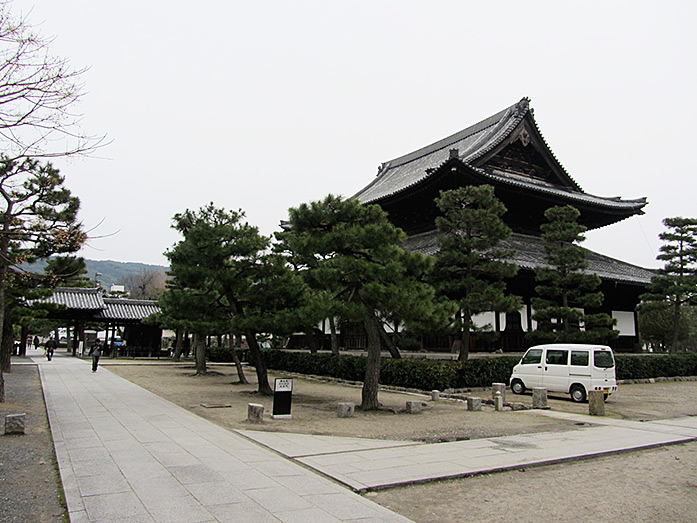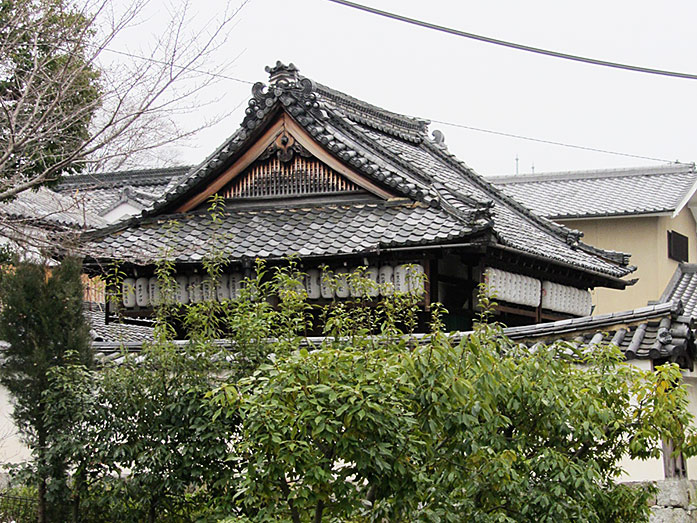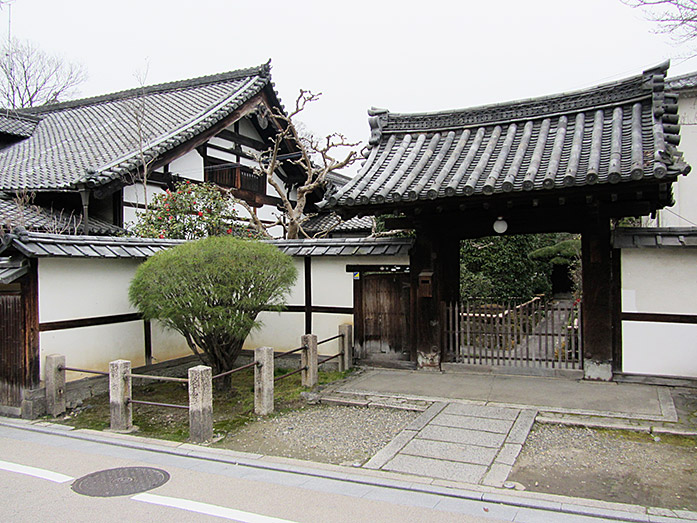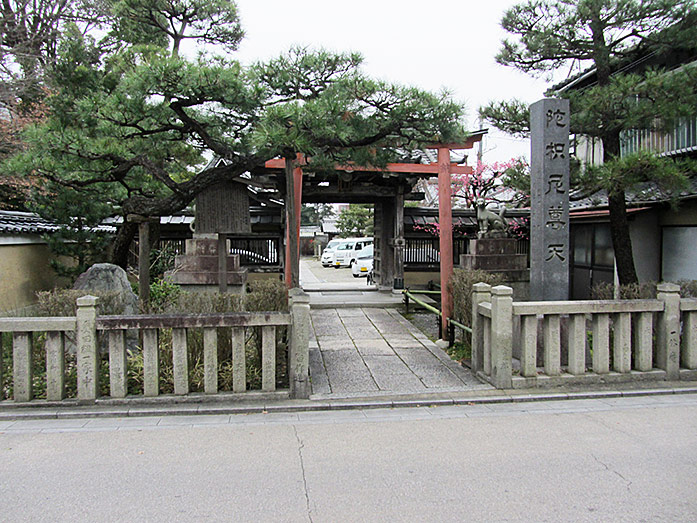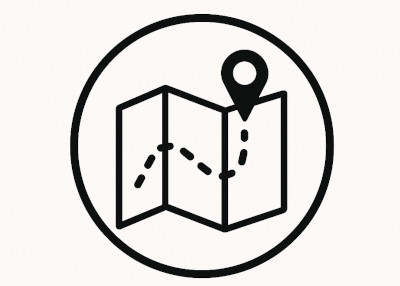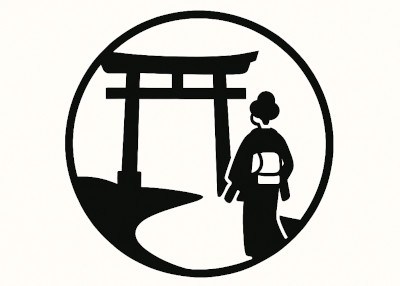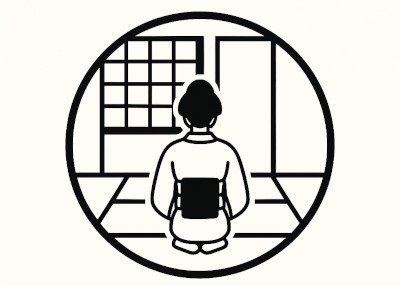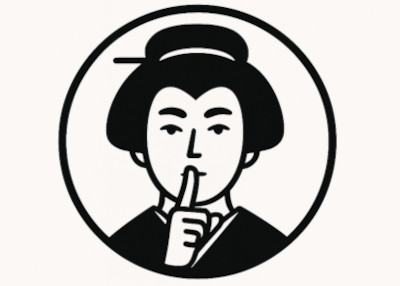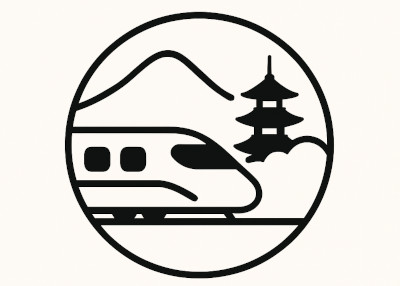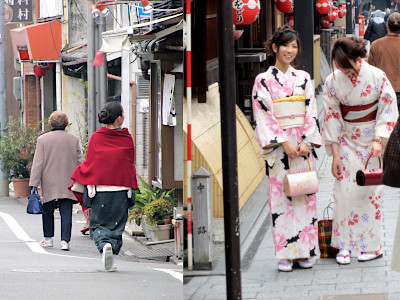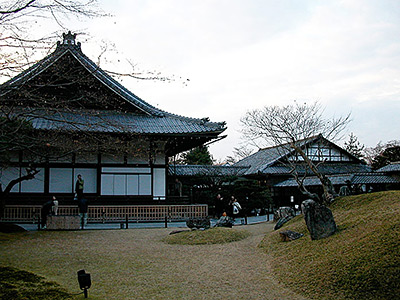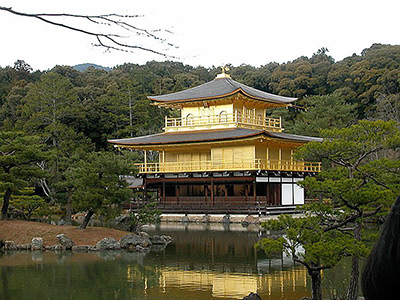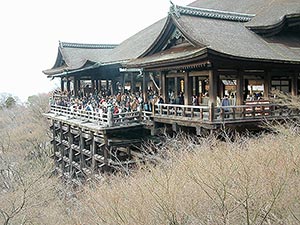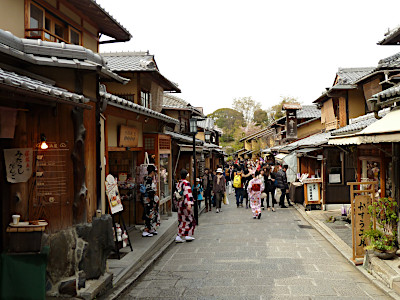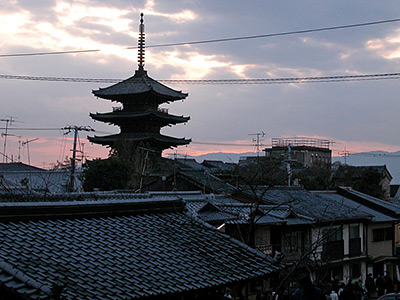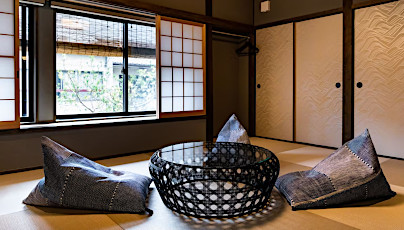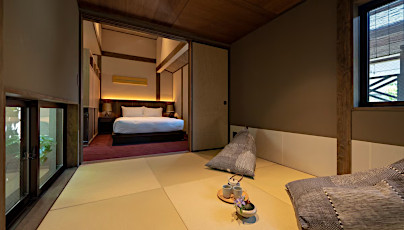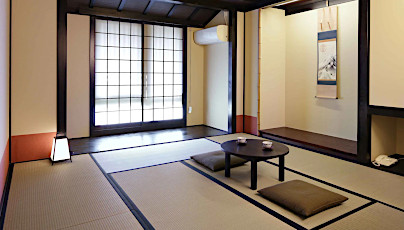Kennin-ji Temple in Kyoto
This post can contain affiliate links, which means that we may receive a small commission if you make a purchase using these links.
Facts & Figures
Kennin-ji is the oldest Zen Buddhist temple in Kyoto and belongs to the Rinzai sect of Zen Buddhism, one of the three Zen branches in Japan (Rinzai, Soto and Obaku). The temple is part of the Five Great Zen Temples of Kyoto (Kyoto Gozan), which are Tenryu-ji Temple, Nanzen-ji Temple (Supervisor Role), Shokoku-ji Temple, Kennin-ji, Tofukuji Temple and Manju-ji.
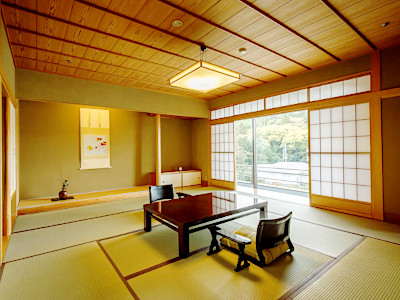 Best Places to Stay in Kyoto >
Kennin-ji consists of the following buildings: Abbot’s Quarters (Hojo, an Important Cultural Property of Japan), Dharma Hall (Hatto), the Imperial Messenger Gate (Chokushimon), an beautiful teahouse (Toyo-bo), Sanmon Gate, a large Zen garden (Daio-en, Grand Garden) and the beautiful Chou-on-tei (garden of the sound of the tide). The Zen garden Chou-on-tei and the twin dragons painting on the ceiling of the Hodo hall are my must-see recommendations for you.
Best Places to Stay in Kyoto >
Kennin-ji consists of the following buildings: Abbot’s Quarters (Hojo, an Important Cultural Property of Japan), Dharma Hall (Hatto), the Imperial Messenger Gate (Chokushimon), an beautiful teahouse (Toyo-bo), Sanmon Gate, a large Zen garden (Daio-en, Grand Garden) and the beautiful Chou-on-tei (garden of the sound of the tide). The Zen garden Chou-on-tei and the twin dragons painting on the ceiling of the Hodo hall are my must-see recommendations for you.
- Kennin-ji Temple:
- Opening Hours: - 10:00 am to 4:30 pm (last entry 4:00 pm, November to February)
- Opening Hours: - 10:00 am to 5:00 pm (last entry 4:30 pm, March to October)
- Admission Fee - 500 yen (Adults), 300 yen (Student), free (Children)
History
Kennin-ji Temple was founded in 1202 by Shogun Minamoto Yoriie (1182 - 1204) upon the request of Emperor Tsuchimikado, the 83rd emperor of Japan (1196 - 1231). He appointed monk Eisai (Myoan Yosai, 1141 - 1215) as the first abbot of the temple. Monk Eisai introduced Zen Buddhism and the tea ceremony to Japan. He made two journeys to China to study Zen Buddhism there. Eisai served for thirteen years as the abbot of Kennin-ji. After his death Eisai was buried at the temple grounds in the Founders Hall. Short after another monk with the name Dogen (1200 - 1253) studied at Kennin-ji. He also made trips to China to deepen his knowledge and later founded the Zen branch with the name Soto. After his death Dogen was buried at the temple grounds. Over the centuries the temple burned down many times and was rebuilt afterwards. Most of the buildings you see today are dating back to the 18th century.
Location

Kennin-ji Temple is located south of the beautiful Gion district near the famous Kiyomizu-dera temple within the center of Kyoto.
Address: 584 Komatsucho, Higashiyama-ku, 605-0811 Kyoto
How to get to Kennin-ji?
- 10min from Kyoto Station to Gion Shijo Station by Keihan Line Train
- 10min from Gion Shijo Station to Kennin-ji
Sightseeing spots
Top:
Chou-on-tei (Garden of the sound of the tide) - This must-see Zen garden is located behind the main building. A set of 3 stones (San-zon-seki) in the garden represents Buddha and 2 Zen monks (servant Boddhisatva). You can also find a stone for seated meditation, which is called zazenseki.
Hojo (Abbot’s Quarters) - Hojo was built in 1599 and got the status of an Important Cultural Property of Japan.
Dharma Hall (Hatto) - Hatto was built in 1765 and is used as the main hall of the temple. The newest addition to the Dharma Hall are the Twin Dragons ink painting on the ceiling by artist Koizumi Junsaku (1924 – 2012). It took him 2 years to finish this masterpiece. The big reveal came in 2002 to celebrate the 800 year anniversary of Kennin-ji. The painting measures 15,70 x 11,40m.
Toyo-bo Teahouse - It is a typical example of Sen no Rikyu style. The tea house was constructed in 1587 and is related to daimyo Hideyoshi Toyotomi (1537 - 1598).
Yatate-mon (Arrow Gate) - It is also known as Chokushi-mon (Imperial Messenger´s Gate) and it is one of the oldest structures of the Kennin-ji temple complex. It was built during the Kamakura period (1185 - 1333). At the surface of the black gate you can still find marks from the Onin War (1467 - 1477) hence the name Arrow Gate.
Fujin and Raijin screen (Goods of Wind and Thunder) - This famous painting was done by Sotatsu Tawaraya (1570 - 1640) in the year 1639. He was also the co-founder of the Rinpa school of painting. On display is a replica, but you still can find the original version at the Kyoto National Museum.
Daio-en (Grand Garden) - It is traditional Zen stone garden with a single tree in its center. The garden is located near the entrance of the temple.
Festival & Events (dates can change without notice)
February
Setsubun (3rd)
One day before spring arrives (lunar calendar) the Setsubun is celebrated. Bean throwing (Mame maki) ceremonies are held at the shrine to get a good fortune for the year. Do not miss the bonfire on the evening.
April
Miyako Odori (1st - 31th)
The traditional annual spring dance of the Kyoto district Gion Kobu performed by Geiko and Maiko is a must-see on your Kyoto visit. Don't miss the most popular dances the Miyako Odori "Cherry Blossom Dances" or "Dances of the Old Capital" at the Gion Kobu Kaburenjo Theater (located close to Gion Corner).
May
Ochatsubo Dochu (1st)
The Ochatsubo Dochu or Traveling Tea Canisters festival dates back to the Edo Period. It represents the practice of showing the new tea harvest from Uji to the ruling shogun in the old days. Now during the parade large ceramic containers with tea are carried by people wearing traditional costumes from Kenninji Temple to Yasaka Shrine.
Aoi Matsuri (15th)
The highlight of this festival is a large parade from Imperial Palace through Shimogamo Shrine to the Kamigamo Shrine. More than 500 people wearing aristocratic costumes from the Heian Period (794 - 1185). The Aoi Matsuri belongs with the Gion Matsuri and Jidai Matsuri to the three most famous festivals in Kyoto.
July
Gion Matsuri (whole month)
The month July is full of different events like the Yoiyama - Kyoto's Magical Night (locals in kimonos look at the giant Gion floats the day before the parade) or the famous Yamaboko Junko (float procession on the 17th of July).
October
Jidai Matsuri ("Festival of Ages") (22nd)
People celebrate with a large parade between Imperial Palace to Heian Shrine the anniversary of the foundation of Kyoto. App. 2000 participants wearing historical costumes from different time periods. Enjoy this great festival which last around 2 hours.
November
Shichi-Go-San (15th)
The well-being and growth of young children is celebrated at the shrine and in the rest of Japan.
Where to stay in Kyoto?
Book your Flight Tickets and Rental Car for your Japan trip
Day trips from Kyoto:
Travelers who viewed Kennin-ji Temple viewed also:
Top rated - Best Machiya Houses in Kyoto
THE MACHIYA Ebisuya, 192 Ebisuya-cho Shimogyo-ku, Kyoto 600-8062
This 3-star guesthouse got an excellent rating. All 30 individually furnished rooms offer free WiFi, air conditioning, bathrooms incl. toilets, fridges, 40-inch flat-screen TVs, and more. THE MACHIYA Ebisuya is located in central Kyoto.
View on Expedia.com
This 3-star guesthouse got an excellent rating. All 30 individually furnished rooms offer free WiFi, air conditioning, bathrooms incl. toilets, fridges, 40-inch flat-screen TVs, and more. THE MACHIYA Ebisuya is located in central Kyoto.
View on Expedia.com
The Machiya Kazahaya, 570-6 Kazahayacho, Shimogyo-ku, Kyoto, Kyoto, 600-8475
The Machiya Kazahaya offers for all guest rooms free WiFi, air conditioning, safes, bathrooms with toilets, refrigerators, and much more. Enjoy also the beautiful Japanese Garden. Guests gave this property the rating - Exceptional.
View on Expedia.com
The Machiya Kazahaya offers for all guest rooms free WiFi, air conditioning, safes, bathrooms with toilets, refrigerators, and much more. Enjoy also the beautiful Japanese Garden. Guests gave this property the rating - Exceptional.
View on Expedia.com
Kyomachiya Ryokan Sakura Urushitei, 425 Kichimonjicho, Shimogyo-ku, Kyoto, 600-8069
This beautiful 3-star guesthouse offers 32 rooms with free WiFi, air conditioning, bathrooms incl. showers and toilets, refrigerators, and much more. Enjoy also the relaxing indoor public bath (no minerals). Guests gave this property the rating - Wonderful.
View on Expedia.com
This beautiful 3-star guesthouse offers 32 rooms with free WiFi, air conditioning, bathrooms incl. showers and toilets, refrigerators, and much more. Enjoy also the relaxing indoor public bath (no minerals). Guests gave this property the rating - Wonderful.
View on Expedia.com

